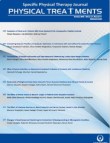Comparison of Plantar Loading Characteristics During Two Fundamental Badminton Movements Between the Individuals With Cavovarus Foot Deformity and the Ones With Normal Foot
Author(s):
Abstract:
Purpose
Some deformities that increase the risk of injury including cavus foot are not correctable yet and can only be limited by prevention and taking care of external causes. The current study aimed at determining if foot type (cavus or normal) resulted in loading differences during badminton fundamental movements, considering the prevalence of cavovarus foot deformity and the important role of the foot in sports - especially the sports that suddenly impose forces with different speeds on foot.Methods
Twenty healthy subjects (10 cases with normal feet and 10 with high arch feet) completed 5 trials in each condition, while in-shoe pressure data were collected at 100 Hz. Peak pressure and mean pressure were analyzed among the subjects in 5 major anatomical regions of the foot using the independent t test in SPSS version 20. Foot type was determined by foot posture index (FPI) (αResults
Results showed that plantar loading characteristics were different in individuals with cavovarus foot deformity and the ones with normal feet. During the forward-right lunge, individuals with cavovarus foot deformity demonstrated a decrease in medial midfoot (P=0.001), lateral midfoot (P=0.040), peak pressure, toes mean pressure (P=0.036), and showed increased mean (P=0.800) and peak pressure (P=0.279) in heel region, but the decrease was not statistically significant. During the forward-left lunge, individuals with cavovarus foot deformity demonstrated a decrease in peak (P=0.010) and mean (P=0.010) pressure in midfoot and forefoot. Mean pressure in heel (P=0.608) and mean (P=0.577) and peak (P=0.509) pressure in toes increased, but the decrease was statistically insignificant.Conclusion
The current findings demonstrated that the loading patterns differed between the individuals with cavovarus foot deformity and the ones with normal feet, which could possibly influence injury risk in the population. The results also indicated that suitable footwear should be used in people with foot deformities after determining the type and risk factors for the foot injuries.Keywords:
Language:
English
Published:
Physical Treatments Journal, Volume:6 Issue: 3, Autumn 2016
Pages:
155 to 160
magiran.com/p1702243
دانلود و مطالعه متن این مقاله با یکی از روشهای زیر امکان پذیر است:
اشتراک شخصی
با عضویت و پرداخت آنلاین حق اشتراک یکساله به مبلغ 1,390,000ريال میتوانید 70 عنوان مطلب دانلود کنید!
اشتراک سازمانی
به کتابخانه دانشگاه یا محل کار خود پیشنهاد کنید تا اشتراک سازمانی این پایگاه را برای دسترسی نامحدود همه کاربران به متن مطالب تهیه نمایند!
توجه!
- حق عضویت دریافتی صرف حمایت از نشریات عضو و نگهداری، تکمیل و توسعه مگیران میشود.
- پرداخت حق اشتراک و دانلود مقالات اجازه بازنشر آن در سایر رسانههای چاپی و دیجیتال را به کاربر نمیدهد.
In order to view content subscription is required
Personal subscription
Subscribe magiran.com for 70 € euros via PayPal and download 70 articles during a year.
Organization subscription
Please contact us to subscribe your university or library for unlimited access!


